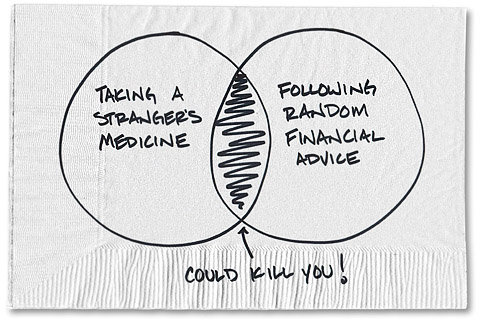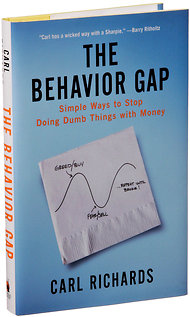 Carl Richards
Carl Richards
Carl Richards is a certified financial planner in Park City, Utah. His new book, “The Behavior Gap,” was published this week, and we’ll be running excerpts all week long. Meanwhile, his sketches are archived here on the Bucks blog.
Take it from me (a stranger): following the advice of strangers is a tricky business.
Let’s say you’re planning a vacation. You read a magazine article about someone who had a great time at a dude ranch in Montana. The pictures look fantastic. You go — and the bugs drive you crazy and you hate the heat and the food and the horses. Maybe the travel writer actually had a great time. But you’re not him.
 Patricia Wall/The New York Times
Patricia Wall/The New York Times
The financial press, personal finance bloggers and best-selling authors are all sources of information. They may have good ideas, which you may find useful. But they can’t tell you how the information and the ideas apply to your situation. They don’t know you. More to the point, they aren’t you.
My friend Tim Maurer is a financial planner, educator and author. His favorite line goes like this: “Personal finance…is more personal than it is finance.”
It’s true. Planning for your financial future is personal. It has to be. A good plan will be unique to your situation, and what is right for your situation may be a disaster for your neighbor. So ponder how the advice you encounter applies to you before you make important decisions about your money.
Excerpted from “The Behavior Gap: Simple Ways to Stop Doing Dumb Things With Money,” published by Portfolio/Penguin. Copyright © Carl Richards, 2012. Reprinted with permission.
Article source: http://feeds.nytimes.com/click.phdo?i=63794f4f117aa3b2a488e41f3b62ee85